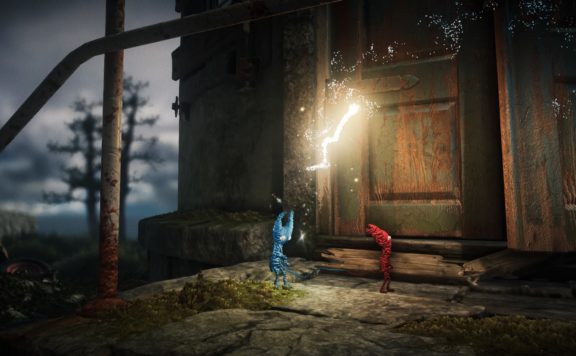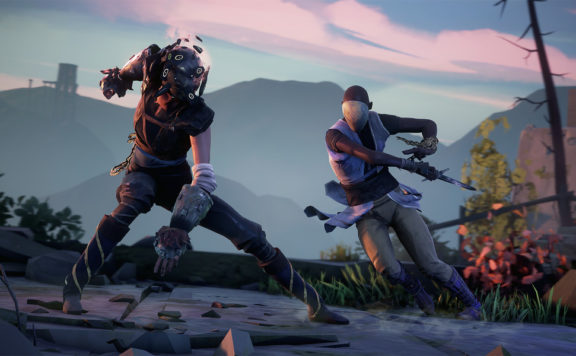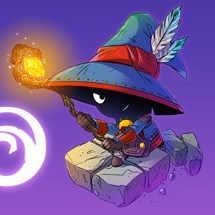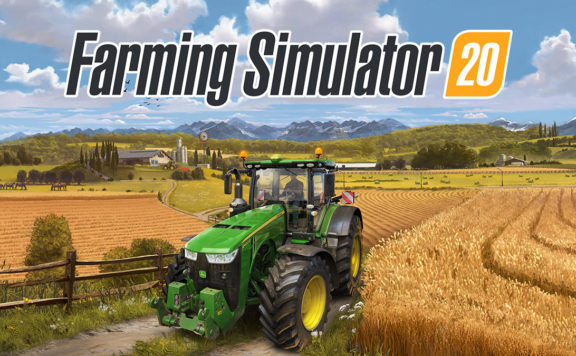Call me old-fashioned, but back in my day, we used to walk a mile every day to a gas station to play a little game called X-Men: Children of the Atom. This wasn’t the days of soda fountains and drive-ins, it was the early 90s, but I’ve had a rather storied past with Marvel games made by Capcom. Fear not though, I’m not going to break down into a “games of the past” history lesson on where Marvel vs. Capcom: Infinite originally began, nor will I purposely slight this most recent incarnation based on any nostalgia born expectations I may have held for this current release. That isn’t to say that I don’t hold very tenacious and impassioned beliefs on the present game as a successor to its progenitors. Rather, to focus on preferences long past would be a disservice to what the current iteration accomplishes. I will, however, supply a little context for former fans of the last foray into the Marvel vs. Capcom universe. This is our Marvel vs. Capcom: Infinite review.
Before we get too far ahead of ourselves, the changes between Marvel Versus Capcom Infinite and MvC3 are few yet important combat distinctions. You now no longer have three characters to choose from in a battle, but two, out of a roster of 30 instead of nigh 40. You can’t call in characters as an add-in or supplementary attack, nor can you plan double and triple hyper combos as before. Not, at least, in the same manner, as you used to. In a successful merger/evolution of MvC2 and 3, Capcom has instituted an “easy combo” feature which essentially allows you to roll through combo and air combos through the use of only the light attack button. You can do the same for hyper combos that will literally allow you to perform them with the hit of a couple buttons. These are features you can turn off for those more inclined to play the game with a tougher yet more rewarding combo style.
 There have also been some changes to the available game modes. There’s a full-fledged Story mode, a Mission Mode, and of course the Arcade and online modes that aren’t much of a departure from the previous games. The Mission mode is a very interesting mix between the tutorial and general character accomplishments. Here you can select your favorite character and they’ll put you through several combo trials on a dummy to maximize your combo effectiveness and character knowledge, or for those less combo-inclined, keep you bashing your head into a virtual wall until you fall over crying in despair. For a die-hard MVC fan you could spend hours practicing your muscle memory while rounding out your character proficiencies. I wouldn’t say that it’s a very fun or exciting mode to play, but for players really wanting to learn their combos for competitive play, it’s probably the best way to do so.
There have also been some changes to the available game modes. There’s a full-fledged Story mode, a Mission Mode, and of course the Arcade and online modes that aren’t much of a departure from the previous games. The Mission mode is a very interesting mix between the tutorial and general character accomplishments. Here you can select your favorite character and they’ll put you through several combo trials on a dummy to maximize your combo effectiveness and character knowledge, or for those less combo-inclined, keep you bashing your head into a virtual wall until you fall over crying in despair. For a die-hard MVC fan you could spend hours practicing your muscle memory while rounding out your character proficiencies. I wouldn’t say that it’s a very fun or exciting mode to play, but for players really wanting to learn their combos for competitive play, it’s probably the best way to do so.
The story mode is a fun diversion from the regular arcade “player vs. CPU” formula. While I won’t give away any spoilers for those looking forward to experiencing it firsthand, the cut scenes are well done, with notable voice actors of many Marvel characters done by their Cartoon Show counterparts. Some of the character models do strike me as odd, especially in the neck and shoulders areas, most notably Captain America and Spider-Man, but during gameplay, this isn’t noticeable. The major misstep in the story mode for me was the lack of options on which characters to fight with. While for story sake, some fights obviously wouldn’t have made much sense to pick characters that weren’t part of the direct storyline, but what irked me was when you would have a large cast of characters leading up to and even “participating” in a fight, but then got stuck with two characters you may not have preferred to play in the end.
 Regardless if you play the story, the arcade mode, or one of the several online ranking matches, the new combat hook in MVC:I is the Infinity Stones. Each stone has a different power that essentially takes the place of the character swap-in attack, while also doubling as a powerful ultimate attack known as an “Infinity Storm” ability. These can range anywhere from the Soul stone which, during the Infinity Storm, can resurrect a fallen character and allows both characters to attack on the screen at once, to the Power Stone which, when activated, will knock back opponents with each hit. Each stone has specific benefits that you can pair with your favorite characters to enhance your abilities or use to annihilate opponents.
Regardless if you play the story, the arcade mode, or one of the several online ranking matches, the new combat hook in MVC:I is the Infinity Stones. Each stone has a different power that essentially takes the place of the character swap-in attack, while also doubling as a powerful ultimate attack known as an “Infinity Storm” ability. These can range anywhere from the Soul stone which, during the Infinity Storm, can resurrect a fallen character and allows both characters to attack on the screen at once, to the Power Stone which, when activated, will knock back opponents with each hit. Each stone has specific benefits that you can pair with your favorite characters to enhance your abilities or use to annihilate opponents.
Lastly, a fighting game of this magnitude wouldn’t end without some healthy competitive play. There are several versus options, including a beginners league or a regular ranked match that will keep players coming back into the fray for heart racing player versus player matches. For those much less worried about ranks or those just looking to have a good time, casual matches are also available. With an option to view rankings on the Online page, future tournaments will likely be created based on player stature and position here. This, in turn, gives every player something to strive for aside from the usual bragging rights after thoroughly thrashing their friends.
For decades Capcom has been at the forefront of making compelling and high-quality 2D fighters. I would be remiss if I didn’t mention that despite how polished the game feels, with its newly revamped audio tracks, revitalized roster and extemporaneous movement abilities, that I still long for the days where the X-Men filled the ranks of playable characters. While that is a hot button point of contention with the game and its fans, Marvel Versus Capcom: Infinite is by far and large the highest quality and, not to mention, most fun 2D fighting game to come out in years. For the competitive fighter fan ready to hone their skills for the next tournament, it’s time to toss your gauntlet in the ring. For the casual fighter fan on the fence and hoping for an X-Men DLC later on, there is still a lot to love here for you, but nobody would fault you for waiting for a price drop.







